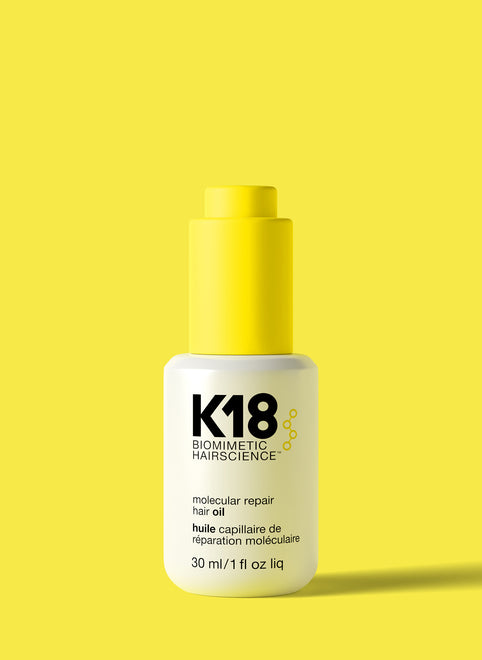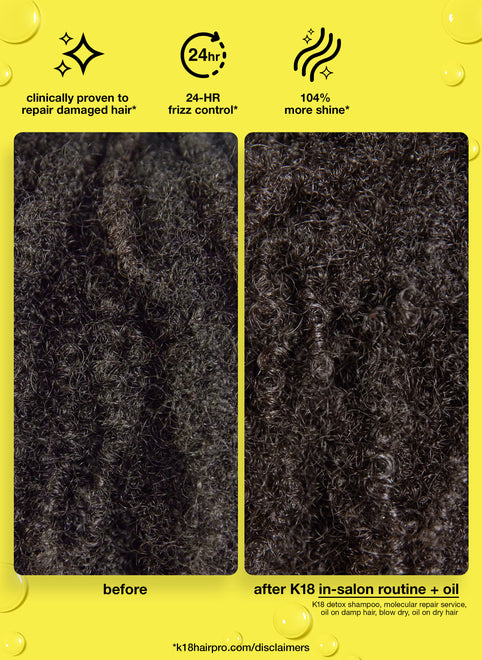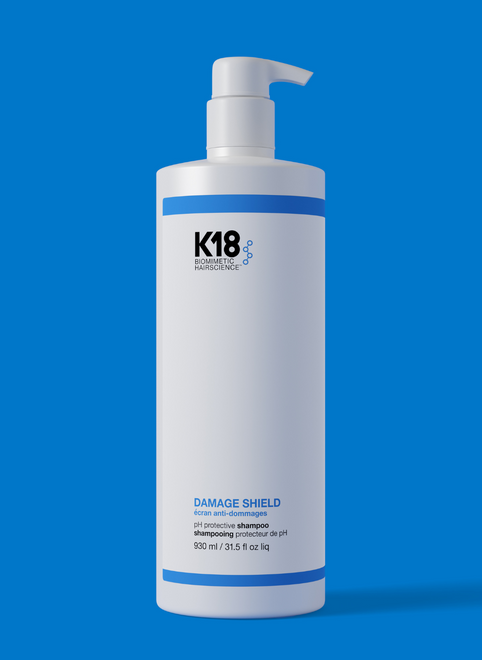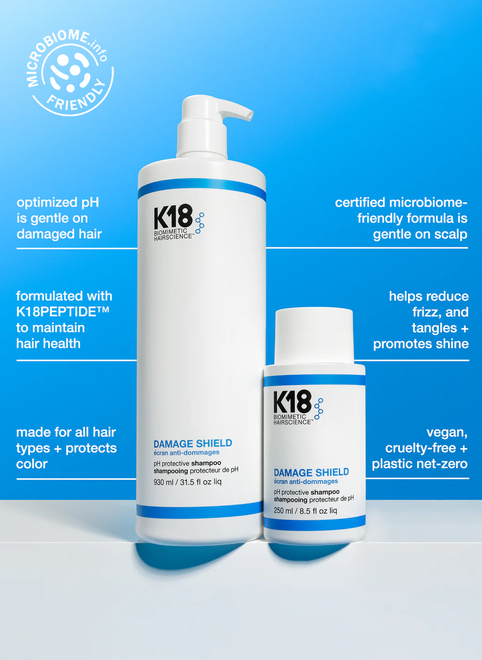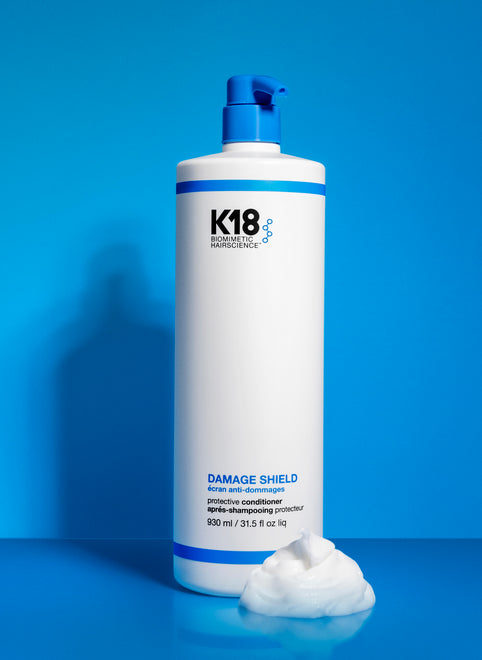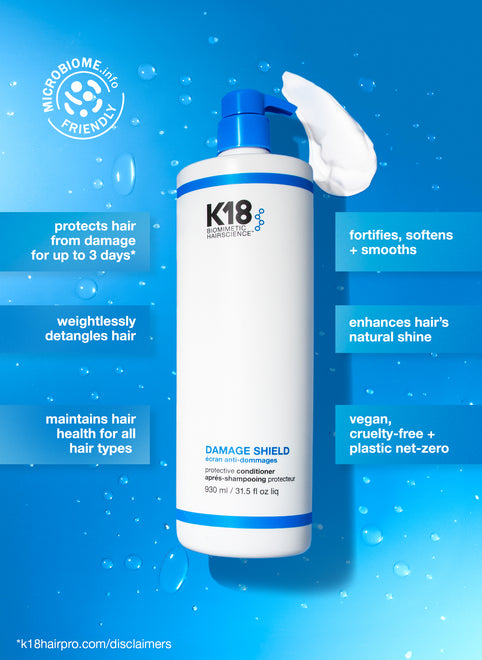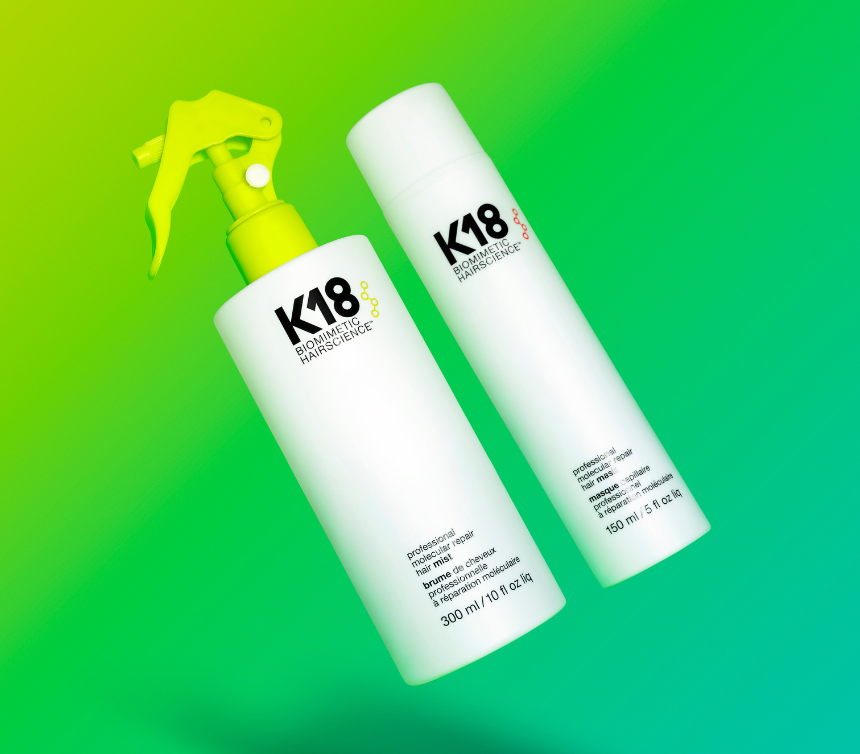We’ve all been there: Tangles not only cause hair to appear messy and frizzy, but also make it nearly impossible to style properly without breakage.
However, just like frizz and split ends, tangles can be largely controlled with the right haircare routine to reduce breakage, boost shine, and deliver healthier hair overall.
But causes tangles in the first place? And what makes them worse? Keep reading for the full breakdown—including how to keep them at bay for good (spoiler: it involves biotech).
what causes tangles?
Tangles occur when two or more hairs intertwine and can’t easily be released with fingers or a brush.
“Hair fibers will naturally entwine when the hair style is disrupted or the hair moves,” explains Fraser Bell, K18’s Head of Advanced Research. “Hair fibers will also entwine when the hair is being manipulated during styling or when washing and applying other products.” Bell adds that when this happens, the hair fibers are essentially bending around one another.
“The sharper the bend—or the more fibers bending around each other—will increase the severity of a tangle,” he says.
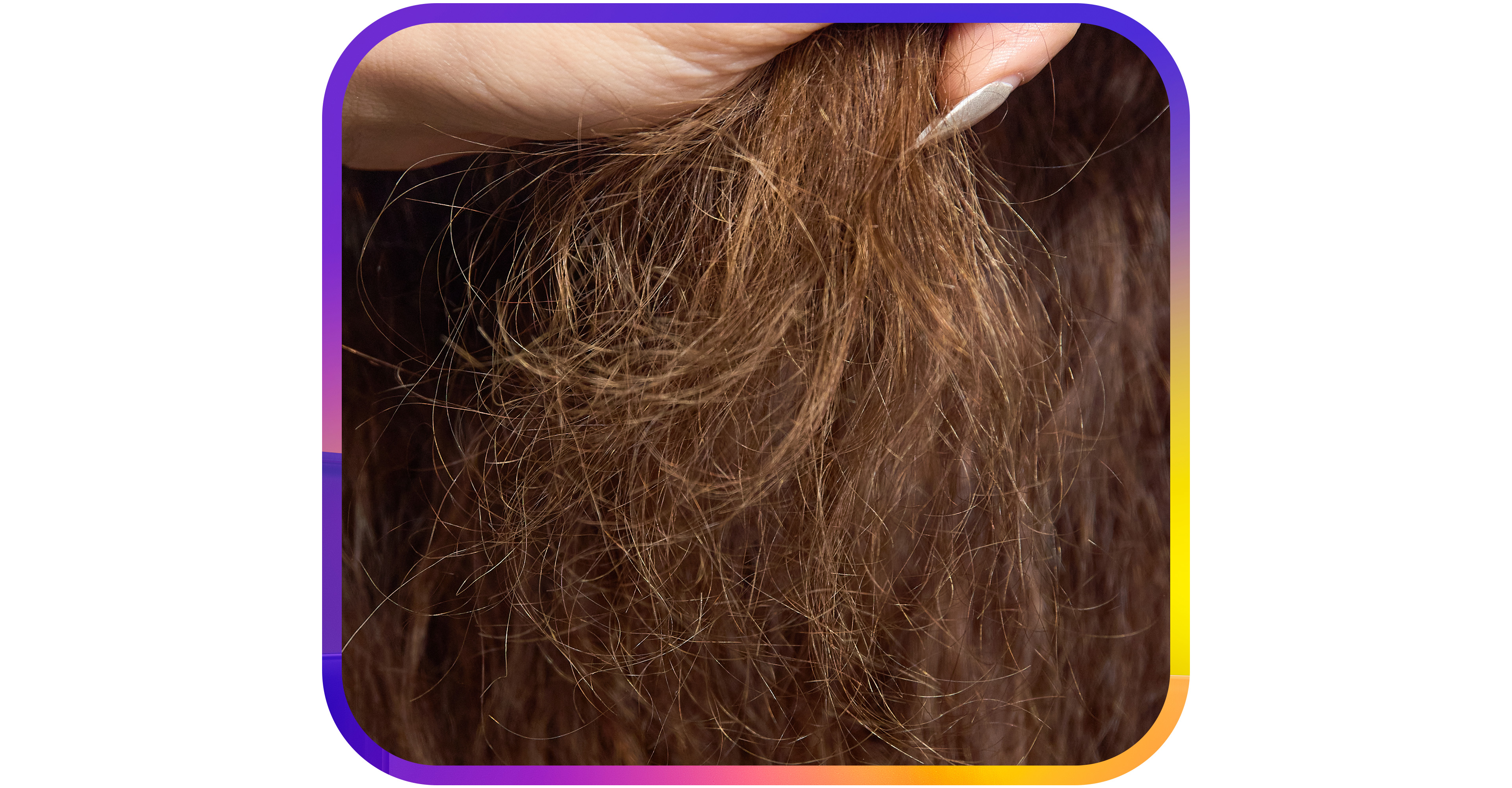
It’s important to note that tangles are often responsible for breakage and split ends.
“When hair strands tangle and we comb or brush, every time we encounter a tangle a very high stress is put on the hair. Repeated stress fatigues and weakens it,” says Bell. “The hair doesn’t necessarily break or split at the moment the tangle is encountered, but because it's weakened it may break or split the next time it encounters a stress, such as when being brushed or combed again.”
what makes tangles worse?
No surprise here: damage makes tangles worse. In other words, anything that tends to wreak havoc on our hair—including frequent heat styling, daily mechanical stress, environmental factors like wind, and bleach, chemical, and color services—can all impact how tangled hair gets.
“When hair fibers have a damaged surface they are rougher and there’s more friction between them which causes more tangling and also makes the hair harder to detangle,” explains Bell. “This can lead to more damage, whereas healthy fibers with a smooth surface will glide over each other more easily and be easier to detangle.”
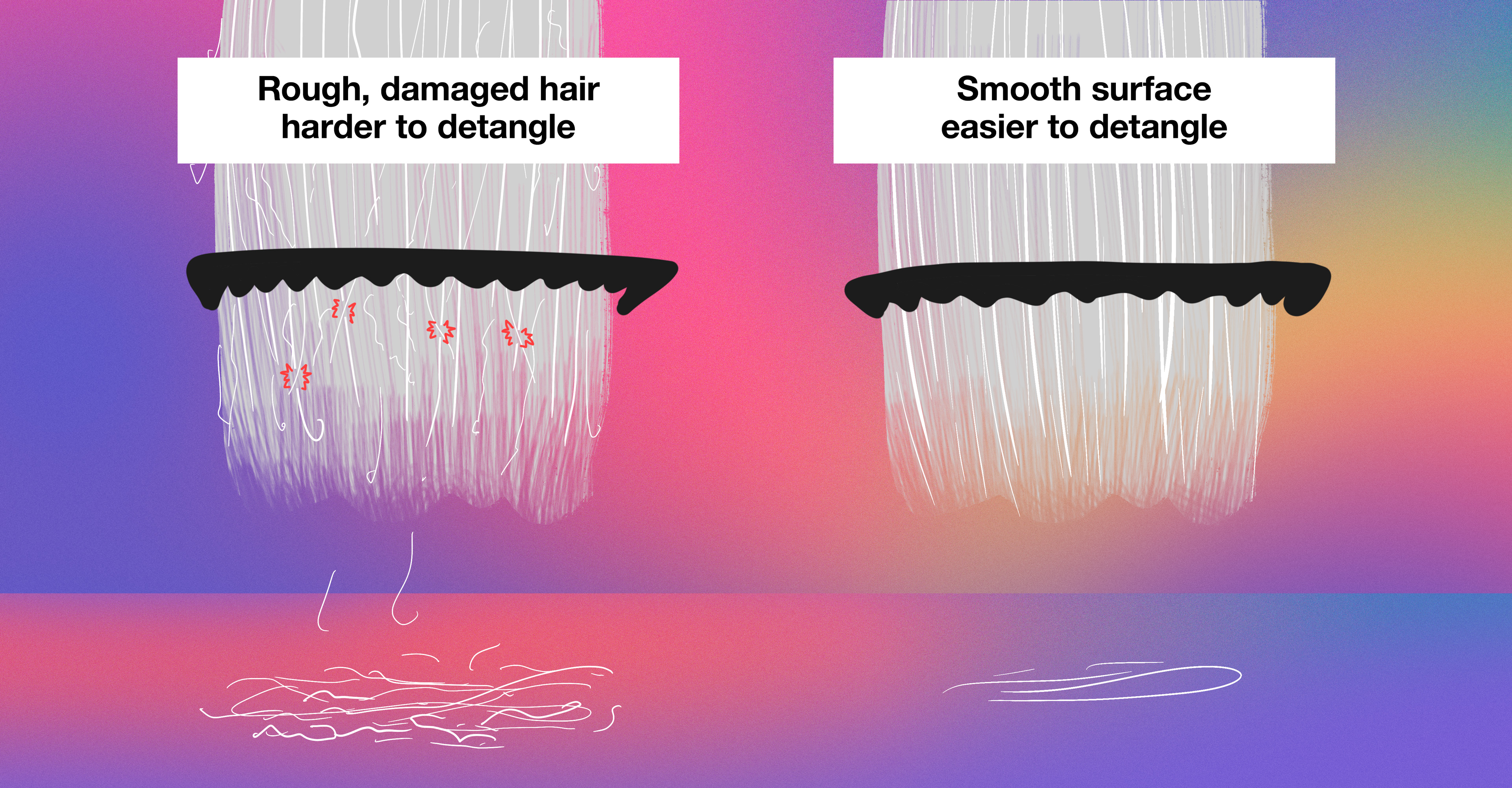
Additionally, certain hairstyles and hair products can make our manes more susceptible to tangles, too. For instance, styles like intricate braids and messy buns—as well as sticky products like gel and hairspray—can make the hair more prone to tangling. Moreover, if we leave our hair unwashed and ungroomed for too long, it can get even knottier.
While too much mechanical styling (i.e. aggressive over-brushing) can make tangles worse, so can going days without brushing at all. Bell recommends being as gentle as possible for optimal results.
“Combing or brushing very quickly will make it harder to release tangles, while combing or brushing it more slowly makes it easier to detangle hair and will cause less fatigue and damage to the hair,” he says.
how to solve tangles from the inside out
The ticket to preventing tangles is simple: adopt a routine that helps smooth and repair your hair so that fibers are less likely to interweave. “Keeping hair in its most healthy condition can help hair maintain its elasticity and stop the surface of the hair from becoming rough, which will reduce tangling and make tangles easier to remove,” explains Bell.
To keep hair in its healthiest state, K18’s award-winning leave-in molecular repair hair mask should be your first order of business.
“The mask treats hair and helps it easily detangle and smooths damaged fibers,” says Bell. “Our K18PEPTIDE™ [the hero of the mask] has been shown to improve the elasticity of damaged hair which will change how the hair tangles.” It repairs hair in just 4 minutes* while simultaneously strengthening strands to help stave off future damage.
Between mask days, Bell recommends using K18’s silicone-free DAMAGE SHIELD shampoo + conditioner to protect hair from daily damage caused by UV rays, mechanical styling, hot tools*, and more. The pH-optimized shampoo gently cleanses hair and reduces excess swelling of the cuticle during the washing process. The biotech-powered conditioner weightlessly smooths, softens, and detangles to create “slip” , aka increased lubrication of the hair fiber, to decrease friction and minimize mechanical damage from brushing and styling.
The molecular repair hair oil is another detangling must. “K18 molecular repair hair oil repairs damage inside the hair and smooths while detangling throughout the day,” says Bell. The weightless formula works on all hair types and is clinically proven to repair damage and reduce frizz at two different levels of the hair fiber*.
Okay—ready to achieve your healthiest, tangle-free hair? Build your K18 routine today.


.png?v=1706135824299&transform=resize=150x150)
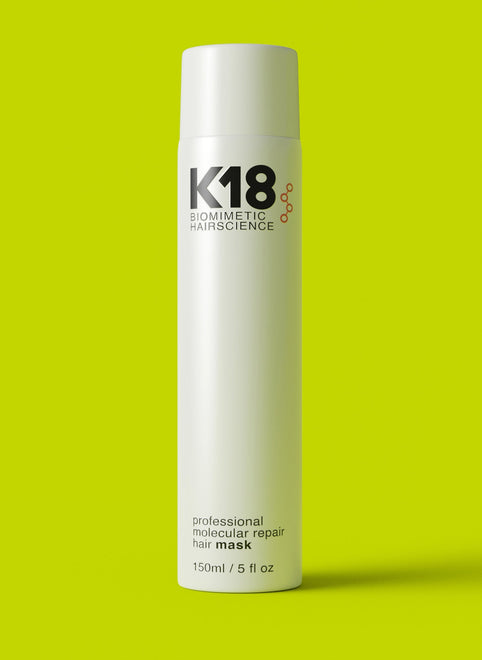
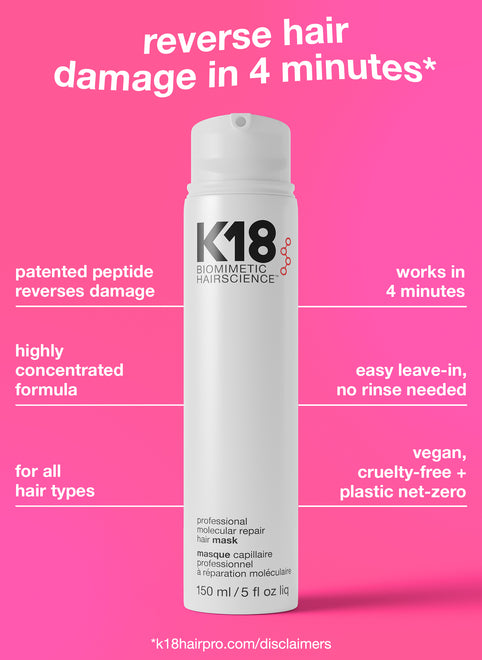
.png?v=1695413339252&transform=resize=150x150)
